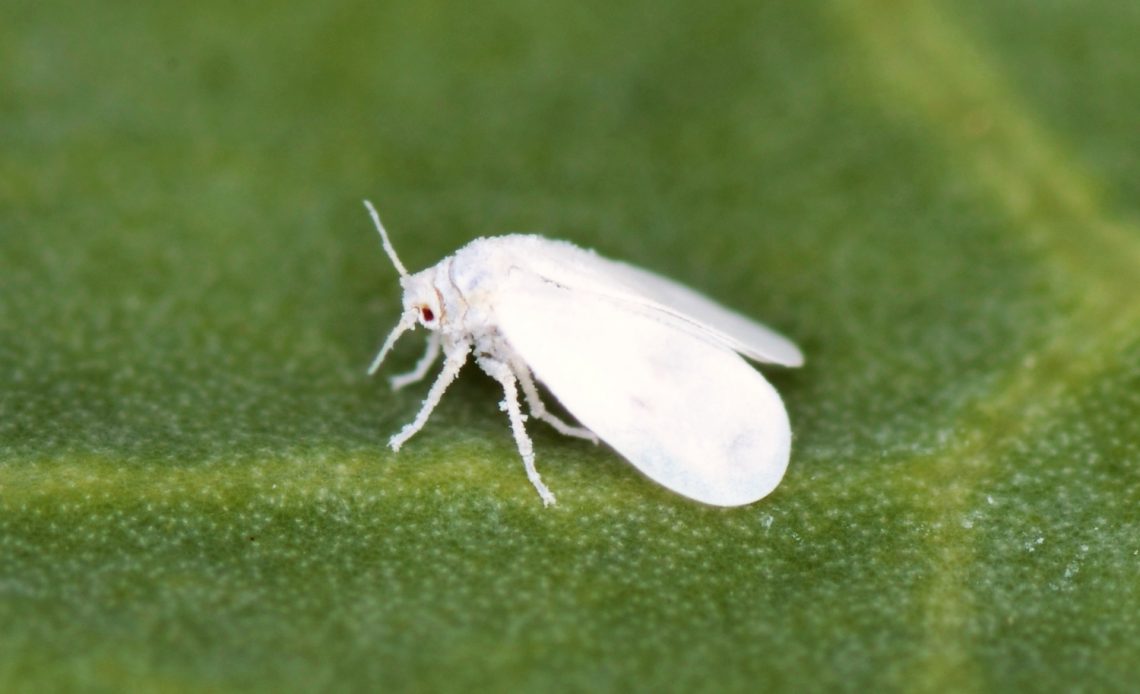

We’re here to help! Wild Yards is a completely free website that is 100% dedicated to helping you create a wildlife-friendly, sustainable yard. Read more
WildYards is reader-supported. When you buy a product through a link on our site, we may earn a comission. Every product is independently selected by our (obsessive) editors and our reviews are unbiased and objective. Read more about our mission or our privacy policy.
Easy to start from seedlings and highly prolific producers, tomatoes are a favorite among gardeners — beginners and experts alike. But, fuss-free as these plants are, they’re not immune to bug infestations. Small bites chewed away from tomato leaves and bare stems that have been stripped of foliage are all signs of an insect problem. If you see white bugs on tomato plants crawling on the leaves and stems, you may be wondering what you can do to stop them.
Those tiny, winged white bugs on your tomato plants are called whiteflies. And although these leaf-sucking insects can cause a lot of damage to the plant, you can get them under control with the use of essential oils, insecticidal soap, and even plain old water.
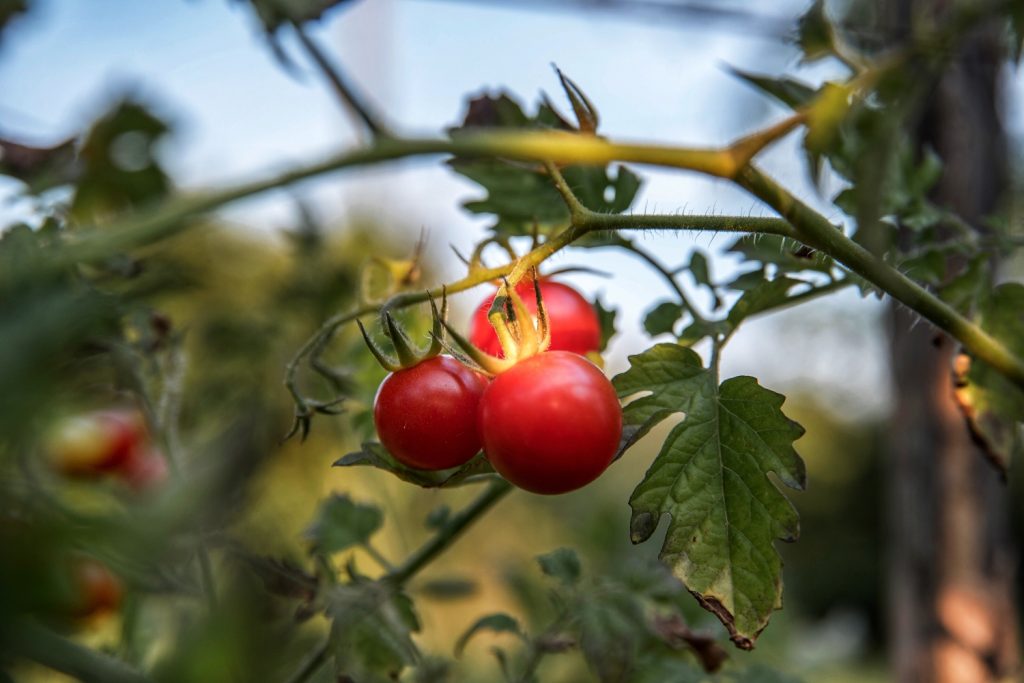
How can you tell if white bugs are eating your tomato plants?
If your tomato plants aren’t looking so good these days, that warrants a closer look. Loss of foliage in a plant that isn’t related to the season or to the plant’s lifecycle is always a cause for concern. But before you can treat your plants, it’s important to know what’s causing the damage in the first place.
If white bugs are eating your tomato plants, you’ll notice the leaves have holes and/or chewed edges. You may see leaves that have been stripped of greenery, leaving only the skeletal veining behind. Some leaves may curl, while others turn brown and black and drop off. Insects may also damage tomato flowers, causing the plants to drop their blooms, severely impacting fruit production.
Now, if your tomato plants are showing more widespread symptoms, bugs may not be your problem (or, at least, not your only problem). Tomatoes that are missing leaves at the base of the plant have probably been the victim of hungry rabbits, and tomatoes that are missing foliage from the top down have been nibbled on by local deer. Meanwhile, missing flower buds and half-eaten tomatoes are likely caused by birds and squirrels (who, interestingly enough, have also been known to eat meat!).
If deer, rabbits, and squirrels are causing your tomato problems, a homemade dish soap repellent can help keep them at bay. And, if birds are the culprits, installing a bird feeder filled with their favorite foods will encourage them to stay out of your vegetable patch. But, if bugs are causing the problem, you’ll need a different solution.
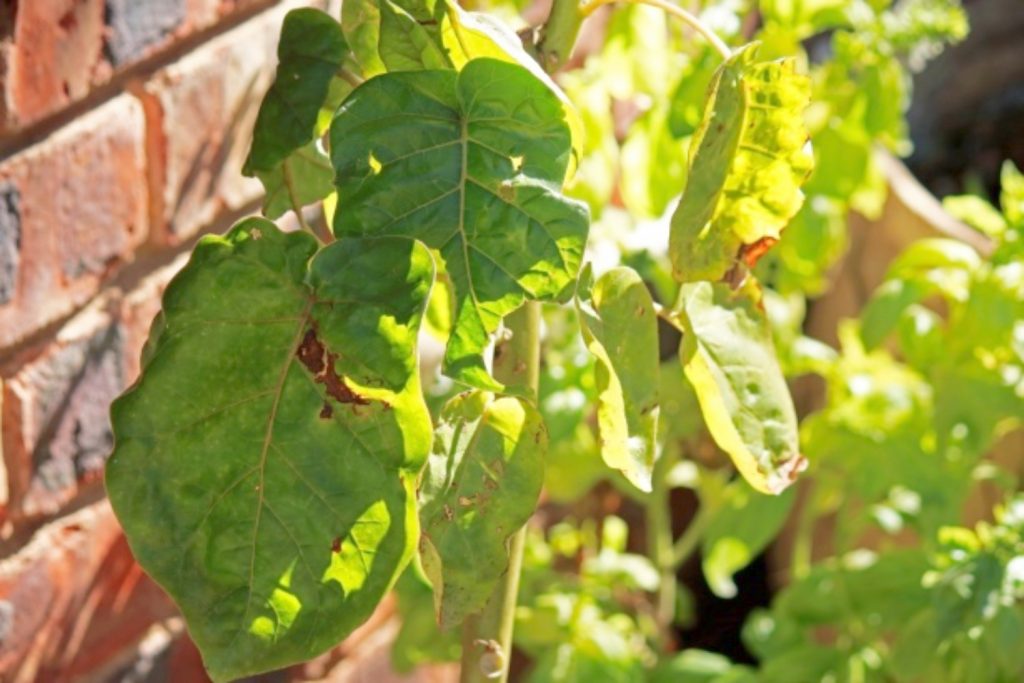
What are whiteflies?
Tiny insects that resemble moths, whiteflies lay 50 to 100 oval eggs in small arcs on the undersides of leaves. Here, their young will be protected from predators, and they’ll have plenty to eat once they reach the outside world 7 to 10 days later. Whiteflies have four instar larval stages before becoming adults. The lifespan of a whitefly is anywhere from 17 to 35 days, with the insects living longer in the cold, winter months.
Whiteflies are hemipterans, an order of insects that are often referred to as “true bugs”. This group also includes leafhoppers, bed bugs, assassin bugs, leafcutters, and cicadas. There are more than 1,550 species of whiteflies, all of which are a major threat to agricultural crops. Whiteflies inject plants with their saliva, which not only causes mechanical damage to the plants but also promotes the spread of sooty mold.
Whiteflies can cause devastating losses in a matter of weeks. And, to make matters worse, they’re quick to build up a tolerance to chemicals, rendering most commercial insecticides useless.
How can you get rid of white bugs on tomatoes?
You haven’t labored over your tomato plants for weeks on end only to have them destroyed by pesky whiteflies! Left to their own devices, these insects can weaken tomato plants, and even kill them. But, fortunately, if you act quickly and treat the plants consistently, you’ll be able to eliminate your white bug problem and keep your tomato plants in tip-top shape. Here’s what you can do.
Spray the foliage with a hose
Although it’s generally recommended that you refrain from spraying your plant’s foliage with a hose, since doing so can result in fungal infections, desperate times call for desperate measures. If your tomato plants are riddled with whiteflies, the first thing you can do to fight back is to spray the plants off with a hose.
See, whiteflies are so small, they can’t swim against the current of a garden hose running on full blast. Larger insects, like hornets and wasps, may be able to escape the stream unharmed. But whiteflies will be wiped from whatever surface they were clinging to, and will quickly drown. Attach a sprayer to the end of your garden hose, and give the plants a shower once a week to help kill and repel whiteflies.
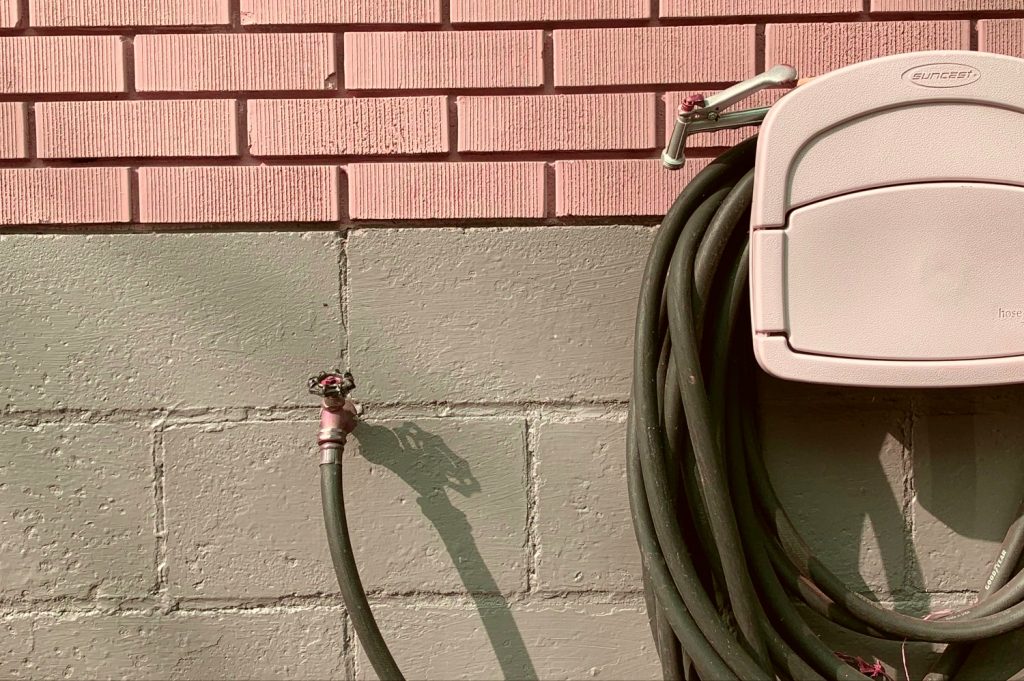
Use essential oils
If spraying your plants down with a hose just isn’t doing the trick, consider using essential oils to get rid of white bugs on tomatoes. These pungent-smelling oils are a favorite among organic gardeners for their ability to repel damaging insects without adding harmful chemicals to garden soil and hugelkultur beds.
A number of essential oils can be used to repel whiteflies. Neem oil, tea tree oil, and a variety of mint oils are good choices. Citronella and eucalyptus also work well. And, when you prune your lavender, save the cuttings to make lavender essential oil. Bugs absolutely hate it!
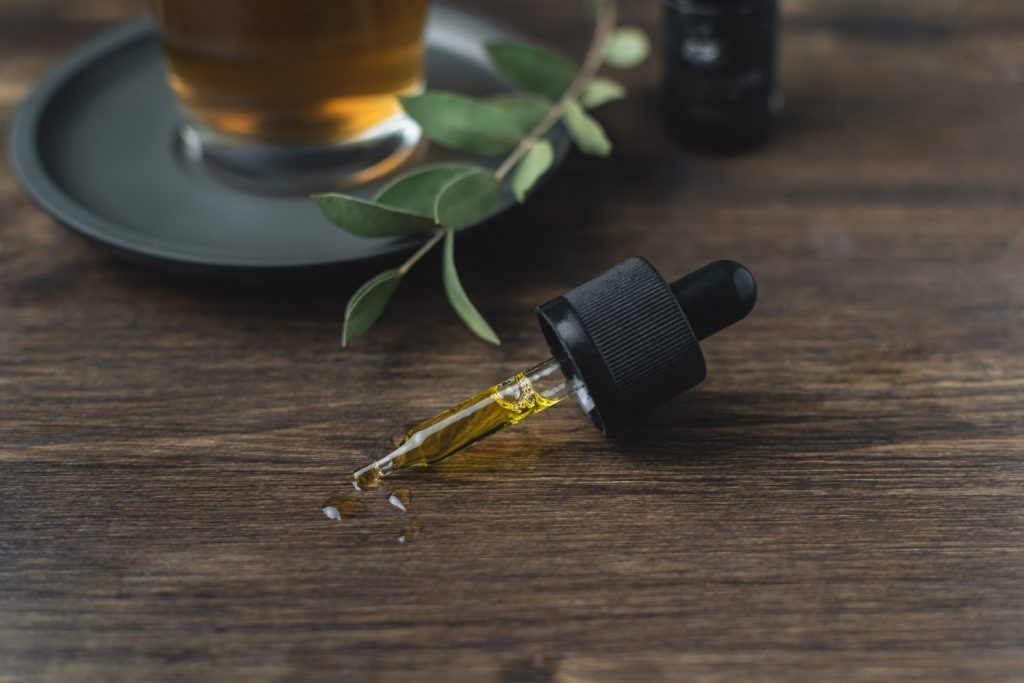
Consider companion planting
A simple, decades-old strategy, companion planting doesn’t just help repel whiteflies and other insects, but it also helps boost pollination rates within your garden, leading to an increase in crop production. A win-win!
To protect your tomato plants from whiteflies, consider growing lemon balm and lemongrass nearby. These plants share the tomato’s growing requirements, making it easier to care for both of them. Plus, their strong odors act as a deterrent against hungry insects and foragers. Basil, too, can be used to keep whiteflies off of tomato plants. As a bonus, this fragrant herb supports pollination and even makes the tomatoes themselves taste better.
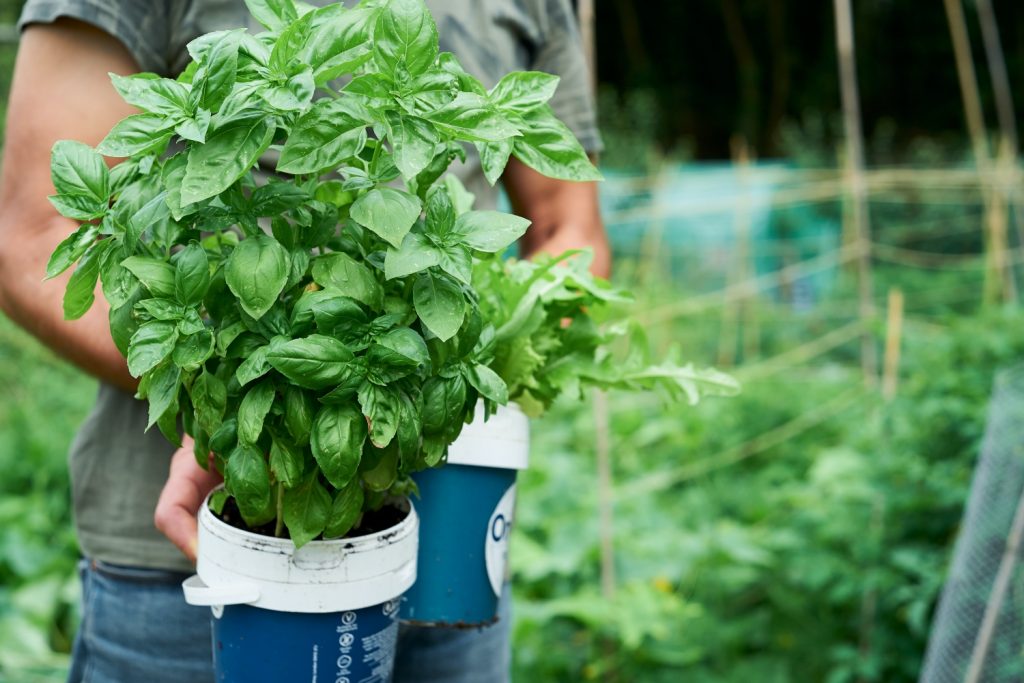
Try insecticidal soap
Made from potassium fatty acids, insecticidal soap (which is not the same as a homemade insecticide that contains soap) has been used to control whiteflies and other garden pests for more than 200 years. This soapy substance works by penetrating the insect’s exoskeleton, causing cell collapse and dehydration.
Insecticidal soap won’t harm plants. It only kills bugs. However, because it’s water-based, it dries very quickly. And, unfortunately, insecticidal soap only works while it’s moist. So while it is effective at eliminating whiteflies, it needs to be reapplied regularly, and each spray should be targeted at the whiteflies themselves. Always wear long sleeves, gloves, safety goggles, and a mask when applying insecticidal soap.
Prune infested foliage
In some cases, whiteflies can be controlled simply by pruning the tomato plants. If the whiteflies are concentrated on several individual branches, removing those branches and burning them or burying them far away from your garden can help scale back the infestation considerably.
Be sure to use sharp clippers when pruning plants. Trim the affected portions of the plant by removing individual leaves or whole branches. Be sure to use clean cuts so as not to stress the plants or leave them prone to diseases. Cut branches all the way back to the plant’s main stem, and avoid removing more than 40% of the plant. If more than half of the plant is infested, pruning may not be an appropriate solution.
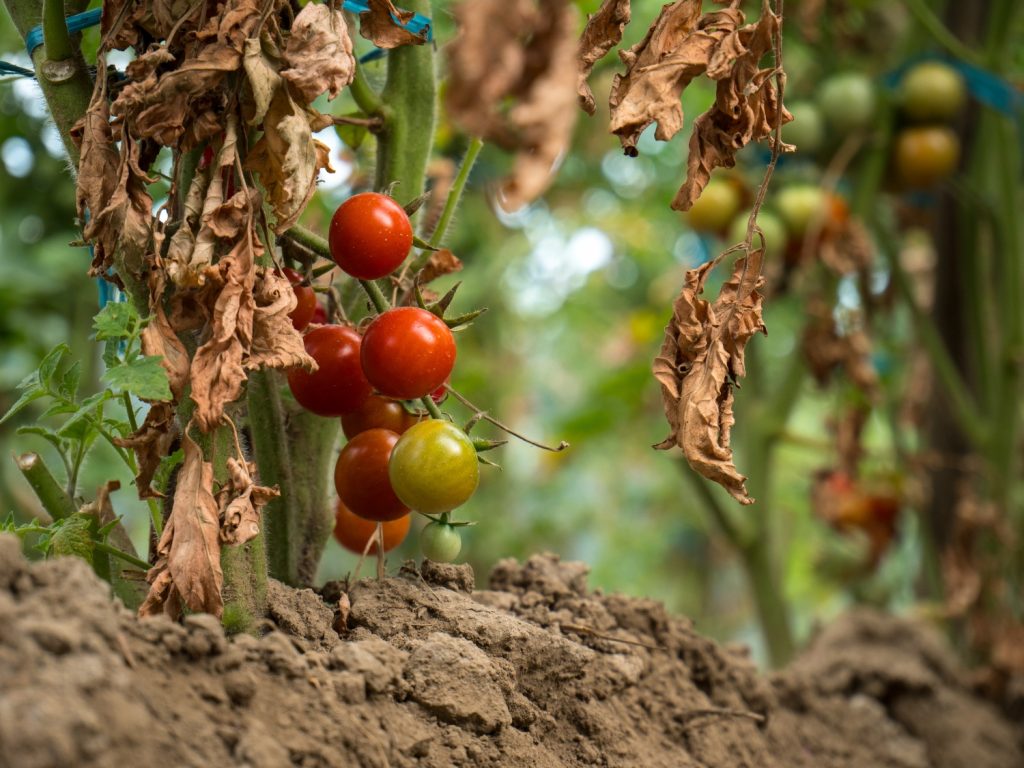
Sprinkle plants with diatomaceous earth
When it comes to killing insects naturally, there’s nothing better than diatomaceous earth. This gray, powdery substance is comprised of the microscopic sediment of fossilized algae, which is jagged enough to penetrate an insect’s exoskeleton and cause it to dehydrate — much like insecticidal soap.
The only downside to diatomaceous earth is that it kills indiscriminately. So, yes, it will take care of your whitefly problem. But it will also eliminate any beneficial insects that have the misfortune of coming into contact with it, like ladybugs, butterflies, hoverflies, and parasitic wasps. Keep that in mind before applying diatomaceous earth
Note: as with insecticidal soap, you should wear long sleeves and gloves when applying diatomaceous earth. Because this powder is damaging to the sinuses, wear safety goggles and a mask, and avoid applying it on a windy day.
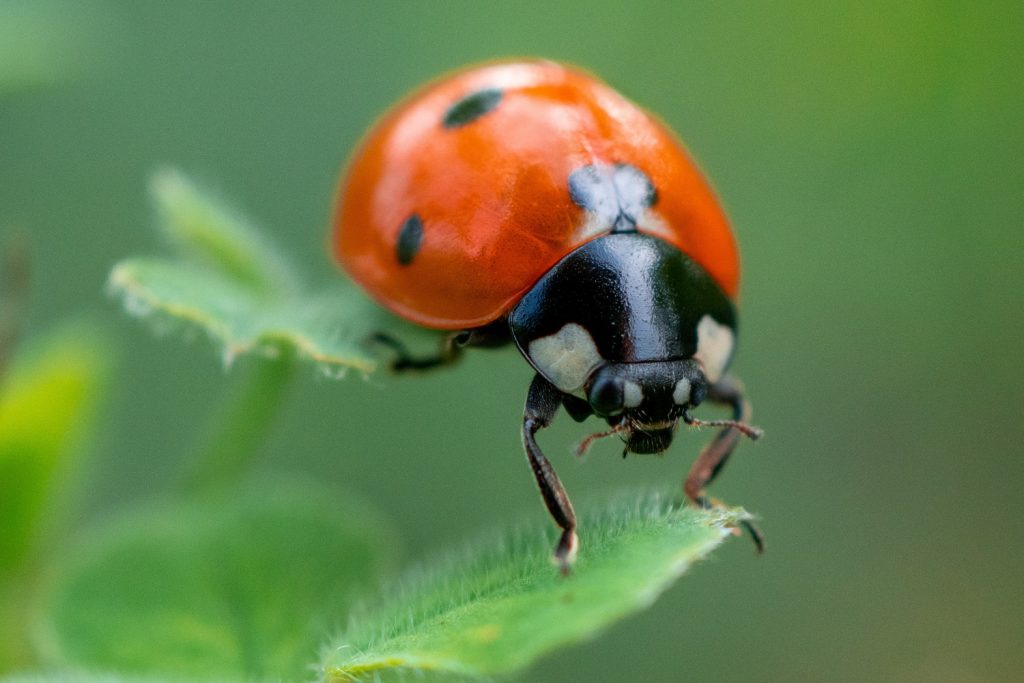
Release pirate bugs
Another strategy for getting rid of white bugs on tomatoes is by introducing their natural predators to your garden. Pirate bugs, which are also “true bugs”, prey on many garden pests, including thrips armyworms, weevils, mites, aphids, leafhoppers, and, of course, whiteflies.
Pirate bugs scour the plants in your garden for pests and are happy to prey on eggs, larvae, and adult insects alike. These bugs have a short lifespan of 3 to 4 weeks, but they reproduce quickly, helping to protect your garden from infestations with minimal effort on your part.
What’s the best way to get rid of white bugs on tomatoes?
The best way to keep whiteflies off of your plants is to 1) employ more than one of the tactics mentioned above 2) switch up your strategies regularly, so the whiteflies don’t build up a tolerance to them, and 3) be vigilant.
By staying on your toes and keeping a close eye on your tomato plants, you can ward off those whiteflies and protect your crop until harvest time.
